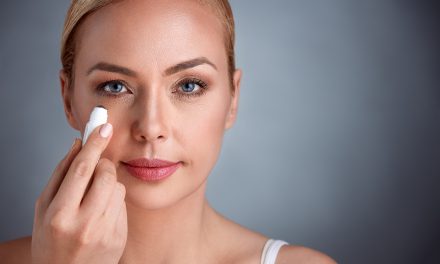A basic skincare routine includes cleansing, moisturizing, and protecting the skin with sunscreen. These three steps form the foundation of healthy skin care that anyone can follow. Keeping the routine simple and consistent is key to seeing good results.
Finding the best skincare routine means understanding your skin type and choosing products that match your needs. This makes it easier to address issues like dryness, oiliness, or sensitivity. Adjusting products based on how the skin reacts helps create a personalized approach that works well over time.
Many people think more products equal better care, but that isn’t true. A focused routine with the right products brings better results than a complicated one. Learning how to identify and avoid mistakes can improve skin health and prevent common problems.
Key Takeaways
- A simple routine with cleansing, moisturizing, and sunscreen is effective.
- Knowing skin type helps select the best products.
- Personalizing and adjusting the routine improves skin health.
Understanding Your Skin Type
Knowing the characteristics of skin helps in choosing the right products and care methods. Skin can vary significantly from one person to another and can change over time due to different conditions.
Identifying Common Skin Types
There are five main skin types recognized by experts: oily, dry, normal, combination, and sensitive.
- Oily skin tends to produce excess oil, leading to a shiny appearance and possible acne.
- Dry skin feels tight, rough, or flaky because it lacks moisture.
- Normal skin is balanced, neither too oily nor too dry, with a smooth texture.
- Combination skin has both oily and dry areas, usually oily in the T-zone (forehead, nose, chin) and dry on the cheeks.
- Sensitive skin reacts easily to products or environmental factors, showing redness or irritation.
Correctly identifying the skin type guides the selection of cleansers, moisturizers, and treatments to avoid problems like dryness or breakouts.
Factors Affecting Skin Characteristics
Skin type is influenced by genetics, age, and health. Natural oil production and skin thickness differ from person to person.
Hormonal changes during puberty, pregnancy, or menopause can alter skin oiliness or dryness.
Medications and certain health conditions can also affect how skin behaves.
For example, some medications dry out skin, while others increase oiliness. Stress levels and diet have an impact too.
Understanding these factors helps in adjusting skincare routines to meet the skin’s current needs effectively.
Seasonal and Lifestyle Influences
Skin reacts to environmental changes like weather and pollution.
In cold weather, skin may become dry and cracked, while hot, humid conditions can lead to more oil and sweat.
Sun exposure causes dryness, sunburns, or increased sensitivity.
Daily habits such as smoking, diet, sleep, and water intake affect skin health.
For instance, smoking lowers the skin’s ability to heal, and poor hydration can make skin dull or flaky.
Adapting skincare routines to the season and lifestyle improves skin condition and comfort over time.
Essential Steps In A Basic Skincare Routine
A simple skincare routine needs a few important actions done regularly. These include cleaning the skin properly, using the right moisturizer to keep skin balanced, and protecting skin from sun damage. Each step plays a clear role in keeping skin healthy.
Cleansing Fundamentals
Cleansing removes dirt, oil, and makeup from the skin’s surface. It is best to cleanse twice a day—once in the morning and once before bed. Using lukewarm water and a gentle cleanser helps avoid irritation.
People should choose a cleanser made for their skin type, such as foaming for oily skin or cream-based for dry skin. Avoid harsh soaps or scrubbing, which can harm the skin’s natural barrier.
Proper cleansing prepares skin for other products like moisturizers and treatments, making them more effective.
Moisturizing Techniques
Moisturizing helps keep skin hydrated and protects against dryness and irritation. Applying moisturizer right after cleansing, when skin is still a bit damp, seals in moisture better.
Choosing the right moisturizer depends on skin type:
- Oily skin: lightweight, oil-free formulas
- Dry skin: richer creams with hydrating ingredients
- Sensitive skin: fragrance-free and calming products
Consistency is key; moisturizing once or twice daily supports the skin’s natural balance and smoothness.
Sun Protection Strategies
Sun protection shields skin from harmful UV rays that cause aging and damage. Applying sunscreen daily is essential, even on cloudy days or when indoors near windows.
A broad-spectrum sunscreen with at least SPF 30 should be applied as the last step in the morning routine. Reapplying every two hours during prolonged outdoor activities is important.
Wearing protective clothing and seeking shade during peak sunlight hours also helps reduce sun exposure and protect skin health.
For more details on building a simple routine, see this guide on basic skin-care steps.
There is a product that might help with dark spots from old acne scars. It’s designed to brighten the skin and fade discoloration over time. More details can be shared if you’re interested! Learn more on our YouTube Channel Here: Valleant Health, or see us on Facebook Here: https://www.facebook.com/valleant
Choosing The Right Cleanser
A cleanser removes dirt, oil, and impurities from the skin. Choosing the right type and formula depends on skin needs and preferences.
Types Of Facial Cleansers
Facial cleansers come in various forms. Common types include:
- Gel cleansers: Ideal for oily or acne-prone skin. They remove excess oil and deep-clean pores.
- Cream cleansers: Best for dry or sensitive skin. They clean without stripping moisture.
- Foam cleansers: Good for normal to oily skin. They create a rich lather to remove dirt.
- Oil cleansers: Suitable for all skin types, especially dry or mature skin. They dissolve makeup and impurities gently.
- Micellar water: A no-rinse option that uses micelles to lift dirt. It’s often used for gentle cleansing.
Each type serves a specific purpose, so knowing their benefits helps in choosing the right one.
Selecting Cleansers For Your Skin Type
Matching the cleanser to skin type is key. For oily skin, gel or foam cleansers work well to control shine and prevent breakouts.
Dry skin benefits from cream or oil-based cleansers that add hydration while gently cleansing. These protect the skin’s natural barrier.
Sensitive skin needs gentle, fragrance-free cleansers. They avoid irritation and soothe the skin.
Combination skin may require a cleanser that balances oil and dryness without being too harsh.
Choosing a cleanser that maintains moisture and effectively cleanses prepares the skin for other products. Knowing your skin type guides this choice.
For more detailed advice on cleansing, visit Your Guide to the Right Cleanser for Every Skin Type.
Finding The Ideal Moisturizer
Choosing the right moisturizer depends on understanding how different ingredients work and matching them to your skin’s needs. Moisturizers mainly serve to hydrate, soften, and protect the skin barrier, but their formulas vary by function and skin type.
Humectants vs. Emollients vs. Occlusives
Moisturizers contain three main types of ingredients: humectants, emollients, and occlusives. Humectants pull water into the skin from the air or deeper layers. Examples include glycerin and hyaluronic acid. They are best for adding hydration, especially in dry but not very oily skin.
Emollients smooth and soften the skin by filling the gaps between skin cells. Ingredients like squalane and fatty acids fall in this group. They help skin feel supple and reduce roughness.
Occlusives form a protective layer on the skin surface to lock moisture in. Common occlusives include petrolatum and dimethicone. They are crucial for very dry or damaged skin that easily loses water.
Adapting Moisturizers To Your Skin’s Needs
Finding the right moisturizer requires adjusting based on skin type and issues. People with oily or acne-prone skin should choose lightweight, non-comedogenic formulas that don’t clog pores.
Those with dry or sensitive skin benefit from thicker creams with more occlusives to prevent moisture loss and protect damaged skin barriers.
Combination skin may need mixing products—lighter lotions during the day and richer creams at night.
Skin can also change with seasons and age, so moisturizer choice should be reviewed often. Using a simple skincare routine helps maintain balance without overloading the skin.
There is a product that might help with dark spots from old acne scars. It’s designed to brighten the skin and fade discoloration over time. More details can be shared if you’re interested! Learn more on our YouTube Channel Here: Valleant Health, or see us on Facebook Here: https://www.facebook.com/valleant
Effective Use Of Sunscreen
Using sunscreen correctly is key to protecting skin from sun damage. Choosing the right type and applying it properly helps ensure skin stays healthy and safe.
Broad-Spectrum Protection
Sunscreens labeled as broad-spectrum block both UVA and UVB rays, which is important for full protection. UVA rays can age the skin and cause long-term damage, while UVB rays cause sunburn.
Experts recommend using a sunscreen with at least SPF 30. This level filters out about 97% of UVB rays. Products without broad-spectrum protection or with lower SPF do not provide enough defense against the sun’s harmful effects.
Daily use of broad-spectrum sunscreen is essential, even on cloudy days. The sun’s rays can penetrate clouds and cause skin damage year-round.
Application Tips For Maximum Efficacy
Applying sunscreen about 30 minutes before going outside allows it to fully absorb. This step is necessary so the active ingredients form a protective layer.
Sunscreen should be applied generously. For the face and neck, a nickel-sized amount or about one teaspoon, is typically enough. Don’t forget ears, the chest, and other exposed skin.
Let moisturizers sink in before applying sunscreen. This prevents the ingredients from mixing and ensures both products work well.
Reapply every two hours or right after swimming or sweating to maintain protection throughout the day.
Targeting Specific Skin Concerns
Effective skincare often means choosing products that directly address particular issues. Whether it’s dealing with breakouts or reducing signs of aging, using the right ingredients and treatments is key to improving skin health.
Addressing Acne And Blemishes
Acne forms when pores get clogged with oil, dead skin cells, and bacteria. To control it, look for cleansers or treatments with salicylic acid or benzoyl peroxide. These ingredients help clear pores and reduce inflammation.
Using a gentle exfoliant once or twice a week can remove dead skin cells without irritating the skin. Avoid harsh scrubs, as they can worsen acne.
For persistent blemishes, products with retinoids promote skin cell turnover and prevent new breakouts. It’s important to introduce retinoids slowly, as they can cause dryness or redness initially.
Consistency is key. A simple routine with cleansing, treating, and moisturizing can keep acne under control when tailored to the skin type.
Anti-Aging Ingredients And Solutions
To reduce fine lines and wrinkles, ingredients like retinol and peptides are common and effective. Retinol boosts collagen production, which helps firm skin and smooth texture.
Antioxidants such as vitamin C protect skin from damage caused by free radicals and brighten dull skin. They are usually applied in the morning before sunscreen.
Hydration is crucial. Using moisturizers with hyaluronic acid holds moisture in the skin, making it look plumper.
Sunscreen daily prevents further aging from sun exposure. Combining these elements creates a straightforward approach to managing early signs of aging.
Personalizing Your Skincare Routine
A good skincare routine fits the needs of the person’s skin and habits. Factors like daily activities, diet, and any sensitivities impact which products and steps work best.
Lifestyle And Dietary Considerations
Skin reacts to lifestyle choices and diet. For example, someone who spends a lot of time outside may need a stronger sunscreen and more hydration. Those who exercise regularly might require gentle cleansing to remove sweat and dirt without drying out the skin.
Diet also plays a role. Eating foods rich in antioxidants, like fruits and vegetables, can support skin health. Drinking plenty of water helps keep skin moisturized. On the other hand, frequent consumption of sugary or greasy foods can cause breakouts or dull skin.
Considering these factors helps find products that protect and nourish the skin based on daily routines.
Allergy Awareness And Sensitivities
People with sensitive skin or allergies must carefully check ingredients in skincare products. Common irritants include fragrances, certain preservatives, and alcohol. Patch testing a small amount of product before full use can avoid reactions.
They should choose products labeled hypoallergenic or for sensitive skin. Using fewer products reduces the chance of irritation. Avoiding harsh exfoliants or strong actives like retinoids may also be necessary.
Knowing what triggers a reaction helps build a routine that maintains healthy skin without causing discomfort or inflammation.
Evaluating And Adjusting Your Routine
A good skincare routine is not set in stone. Regularly checking how your skin reacts helps decide if any changes are needed. This approach ensures the routine stays effective and suits current skin needs.
Tracking Changes And Results
He or she should observe the skin daily or weekly, noting improvements or problems like dryness, redness, or breakouts. Keeping a simple skin journal or using a phone app to record these changes helps track progress over time.
Photos taken before starting and after a few weeks provide visible proof of results. They can highlight subtle changes that might be missed day to day.
Pay attention to how the skin feels—tight, oily, or balanced—as this signals if the products are working well. Adjustments should be based on clear, consistent signs rather than one-off reactions.
When To Update Your Skincare Steps
Routine updates are necessary when skin changes due to seasons, aging, or lifestyle shifts. For example, skin may need more moisture in winter or lighter products in summer.
If irritation or persistent breakouts happen, reducing steps or switching to gentler formulas can improve skin health.
Adding treatment products like serums should follow successful basic routine adaptation to avoid overload.
A good rule is to review and consider changes every 6 to 8 weeks, giving enough time to see effects while keeping the routine current and effective.
There is a product that might help with dark spots from old acne scars. It’s designed to brighten the skin and fade discoloration over time. More details can be shared if you’re interested! Learn more on our YouTube Channel Here: Valleant Health, or see us on Facebook Here: https://www.facebook.com/valleant
Common Skincare Mistakes To Avoid
Many people unknowingly damage their skin by using too many products at once or treating their skin too harshly. Understanding how to properly care for skin and avoid these errors helps keep skin healthy and balanced.
Over-Exfoliation Risks
Exfoliating too often or using harsh scrubs can strip the skin of its natural oils. This causes dryness, irritation, and even redness. Over-exfoliation weakens the skin’s protective barrier, making it more sensitive to sunlight and pollution.
People should limit exfoliation to 1-3 times per week, depending on their skin type. It’s better to use gentle chemical exfoliants like alpha hydroxy acids (AHAs) rather than rough physical scrubs. After exfoliating, applying moisturizer immediately helps restore hydration and reduce irritation. Skipping this step can lead to increased dryness and flaking.
Product Layering Errors
Applying too many products or layering incompatible ingredients can lessen their effectiveness or cause reactions. For example, using strong acids with retinol in the same routine can irritate skin.
To avoid this, it’s important to understand each product’s function and follow a recommended order: typically cleanser, toner, treatment (serums), moisturizer, and sunscreen last during the day. Instead of rubbing, gently pat or press serums and moisturizers into the skin to enhance absorption and reduce pulling.
Using too much product at once does not improve results. A thin, even layer is enough to allow the skin to breathe and absorb ingredients properly.
Consulting With A Dermatologist
Finding the right skincare routine can be challenging. Sometimes, professional input is needed to address specific skin concerns or to adjust products safely. Knowing when to seek help and how to prepare for an appointment helps make the most of a dermatologist visit.
When To Seek Professional Advice
A dermatologist should be consulted if skin issues persist despite basic care. This includes severe acne, unexplained redness, irritation, or sudden changes in skin texture or color. People with chronic conditions like eczema or psoriasis also benefit from expert guidance.
If over-the-counter products cause irritation or if there is uncertainty about which ingredients suit a certain skin type, advice from a professional can prevent damage. A dermatologist can diagnose underlying problems, recommend stronger treatments, or suggest tests if needed.
Preparing For A Skincare Assessment
Before the visit, it is helpful to track current skin problems and existing products. Writing down any allergies or reactions to skincare or medications provides useful information. A list of lifestyle factors such as diet, stress, and sun exposure also helps.
During the appointment, the dermatologist will examine the skin closely and ask detailed questions. Bringing photos of past skin conditions or questions about specific concerns ensures nothing important is missed. Clear communication helps the dermatologist tailor recommendations precisely.
How to Build a Dermatologist-Approved Skincare Routine
Frequently Asked Questions
A solid skincare routine focuses on cleansing, moisturizing, and protecting the skin. Finding the right order and products depends on the time of day, skin type, and specific skin needs.
What are the essential daily steps to achieve glowing skin at home?
The essential daily steps are cleansing to remove dirt, moisturizing to keep the skin hydrated, and applying SPF to protect against sun damage. These three steps help maintain healthy, glowing skin.
Can you break down the correct order of a skin care routine for morning and night?
In the morning, start by cleansing, then apply any treatments or serums, followed by moisturizer. Finish with a broad-spectrum sunscreen of at least SPF 30.
At night, cleanse first, apply treatment products like vitamin A-based creams, then moisturize to support skin repair during sleep.
What are the fundamental skin care routine steps for complete beginners?
Beginners should focus on three main steps: cleanse, moisturize, and protect with sunscreen. Starting simply allows the skin to adjust and makes it easier to notice how products affect the skin.
How can one determine the most effective skin care routine suited to their skin type?
They should identify their skin type first—dry, oily, combination, sensitive, or normal. Then, choose gentle products designed for that type and introduce new items slowly to observe how the skin reacts.
What does the 4-2-4 rule entail and how does it apply to skincare?
The 4-2-4 rule divides time for cleansing, treating, and moisturizing into manageable parts. While not widely referenced in the search results, it suggests spending time on each step to ensure thorough care. Applying products in this order enhances absorption and effectiveness.
In what sequence should nighttime skin care products be applied for optimal results?
At night, start with a cleanser to remove impurities. Next, apply any targeted treatments like vitamin A or serums. Finish with a moisturizer to hydrate and help repair the skin while sleeping. This order supports the skin’s natural overnight renewal.
There is a product that might help with dark spots from old acne scars. It’s designed to brighten the skin and fade discoloration over time. More details can be shared if you’re interested! Learn more on our YouTube Channel Here: Valleant Health, or see us on Facebook Here: https://www.facebook.com/valleant





















